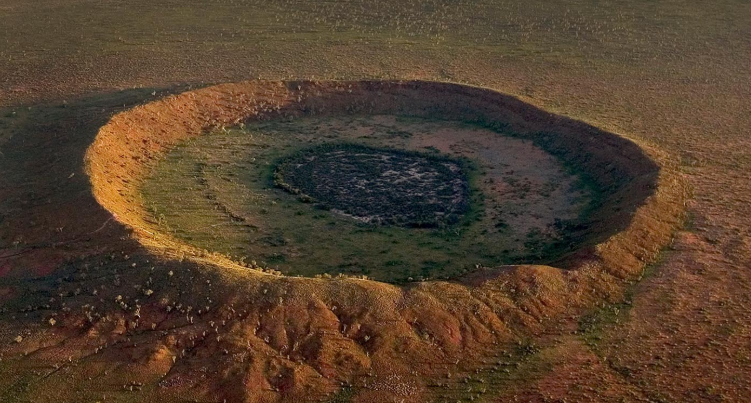Вулф-Крик, кратер
Категория:
Страна:
Регион:
Западная Австралия
Вулф-Крик, кратер
Кратер
Другие названия:
Wolfe Creek Crater
Значение:
Национальное
Время визита:
1 h
Цена:
бесплатно
Почему Топ:
Второй по величине метеоритный кратер в мире. Он образовался в результате падения на Землю огромного метеорита около 300 000 лет назад.
Описание:
Двигаясь со скоростью 15 км в секунду, этот огромный кусок космического камня мог бы пересечь Австралию за пять минут. Кратер был открыт европейцами только в 1947 году, но давно известен аборигенам. Это место культурного значения, связанное с их мифами о сотворении мира. Популярны экскурсии, наблюдение за природой и фотография.
Категории:
Кратер
Кратер
Зачем посещать:
Фотографировать
Наблюдать
Интерес:
Физподготовка:
Лучшее время:
Январь
Февраль
Март
Апрель
Май
Июнь
Июль
Август
Сентябрь
Октябрь
Ноябрь
Декабрь
Доступ:
Велосипед
Авто
Внедорожник
Пешком
Мотоцикл
Roads:
Гравий
Emergency:
112
Details:
No dogs (or other pets) allowed in this park
Safety:
Safely
Clothing:
Seasonable
Connection:
Ok
ТОПОВОЕ РЯДОМ
ТУРЫ В ЭТО МЕСТО
ТОПОВЫЕ СТАТЬИ
- Sumatra
- Honduras
- Wrangel Island
- Gibraltar
- Island
- From trauma healers to in-house psychologists, hotels are increasingly catering to travellers’ mental health
- Turtle facts
- Traveling to Russia
- Greece
- Panama
- Niger
- Мошенничество с Istanbulkart: чего следует остерегаться туристам
- 12 of the best places to visit in April in Europe: beaches, Easter, cities, and adventures
- Mammoths and travel: where to see habitats, traces and digs, and museums
- Kenya Nchi Yangu Song
- Morocco
- Nanai
- Kostroma (Russia)
- Scythians
- История легендарного поезда Orient Express
Создано:
Обновлено:
ID:
198234

 France
France